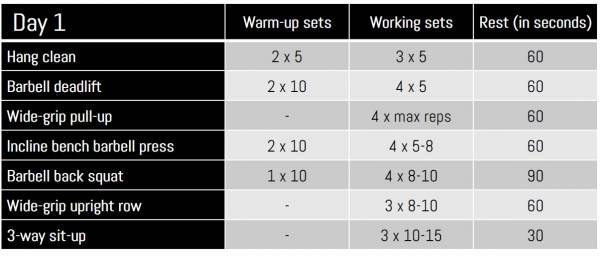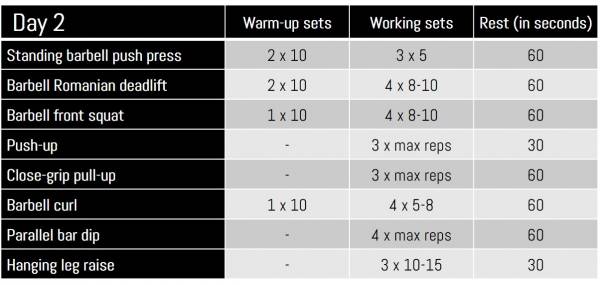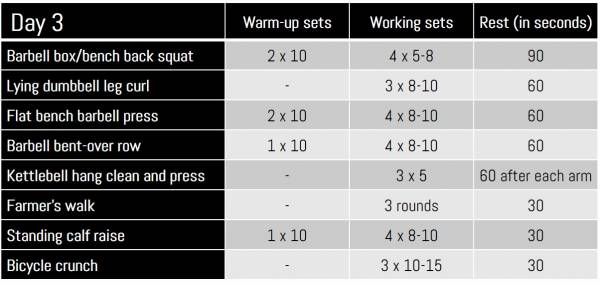Everyone wants to claim they’re old-school these days, but do their actions reflect that statement? Modern hypertrophy programs seem to follow the same boring protocols, feeding egos but providing very little progress. Bodybuilding training from yesteryear was far from popular among the masses. The training was simple, brutal, and effective.
Monday, which has become international chest day for all the bros, sees an endless line for the bench press stations. Eager, ego-driven lifters asymmetrically pour every ounce of effort into the one and only “important” exercise, but this does little for long-term aspirations. The dopamine spike and chest-puffing soon wear off, and the herd migrates to the squat rack for a few sets of barbell biceps curls.
How Hard Work Was Forgotten
Long ago, when lifters were naturally big, strong, and powerful, full-body routines ruled the gym. They were replete with Olympic lifts, difficult and now obscure exercises, and plenty of volume. Whole-body workouts checked all of the boxes for building a Greek-like physique.
As the decades flew by, bodybuilding went from the gym to the lab. Drug cocktails became a shortcut for hard work. The aesthetic, balanced, and proportioned body everyone had aspired to devolved into a cartoonish assembly of packed beef with little to no functionality.
Drug protocols have become so complex and extreme that training changed from careful programming and measured progress, to a mere stimulus to activate hormones. Training took a backseat to nutrition and pharmaceutical preference. With that came the shift in focus to training only one body part per day. Frequency decreased, and rest periods and food consumption increased.
If you look at any professional bodybuilder program, it will be eerily similar to all the rest. Chest on Monday, back on Tuesday, shoulders on Wednesday and so on. Very little creativity, very much cookie-cutter.
Where does this leave the average, natural lifter? Since most research revolves around performance and not aesthetics, we mortals are left emulating the “big guys.” This isn’t only unrealistic, it’s also contradictory.
The old-school lifters such as John Grimek, Clancy Ross, and Steve Reeves all had physiques the average lifter today would die for. But here’s where logic is thrown out the window: Why would you train using a method built for a completely different look? In other words, if you want to look like an old-school bodybuilder, then train like one. It’s the simple idea of specificity. Why not adopt some of the old principles of training and reap big rewards?
Get Back to the Old School
Here are a few forgotten principles from the past that could use some dusting off and put to good use.
- Perform full-body and/or simple, basic upper/lower split routines. Chopping up the body into bits and pieces won’t allow the natural lifter to fully benefit from training. The body performs better when more muscle is stimulated at once. A full-body or an upper/lower split will allow more muscle to be stimulated, more frequently.
- Do difficult stuff. Don’t shy away from Olympic lifts and power movements. Squats, pull-ups, dips, cleans, push presses, snatches, and high pulls are all big, powerful moves that stress a lot of muscle in a good way. They help increase muscle-building hormones and make the entire body strong and resilient. You can’t do that with endless sets of cable concentration curls.
- If you must do isolation work, go heavy. Barbell cheat curls, lying triceps extensions, and lateral raises all have their place, but make sure to go heavy and stick to just a few sets. Overloading your arms with a ton of isolation work will only stall their strength and mass development.
- Do staggered sets. Old-school guys didn’t waste their time. They didn’t have cell phones to play with and take selfies in between sets. Sneak in sets of calf raises in between sets of bench presses, or dips in between chins. Use your time wisely and work on weak points while you “rest.”
- Gut through it. If you drag yourself into the gym lacking sleep, food, or just had a crappy day, you can’t just turn around and go home. You’ve already shown up, so suck it up and do the work. Endure the times you feel unmotivated, and you will bust through plateaus.
- Train more often. Hitting every body part twice or three times per week, as opposed to once, will double or triple your opportunity for stimulation and muscle growth. Again, stay with the basics without loading down your program with a bunch of filler exercises. All that fluff might feel good, but it does little in the way of actual progress.
You can use these old-school principles to tweak your current plan. For example, throw out all of the cable curls and kickbacks in favor of bigger, meatier replacements like cheat curls and heavy weighted dips. Take out the flys and pull-downs, and go with bench presses, pull-overs, pull-ups and heavy rows.
Get Big the Old-School Way
What good is all this talk about old-school training without a sample program to take home? Below is a sample program designed with the principles discussed above in mind. It isn’t fancy, complicated, or full of fluff. It is directly from the school of yesteryear, and guaranteed to build an impressive, muscular, strong physique, the way it was meant to be built.
Perform each of the following training days once per week for a total of three training days. For example, you could go with Monday, Wednesday, and Friday; or Tuesday, Thursday, and Saturday. Feel free to perform cardio or other activities on the “rest” days. Pay close attention to warm ups, form, technique, and rest periods.



Gadgets Don’t Beat Hard Work
It doesn’t take everything and the kitchen sink to build a strong, powerful physique. No matter how advanced we think our training has become, the basics still reign supreme. Machines, cables, and other contraptions all have their proper place in specific programs. But if you want pure, raw, natural muscle, take a tip from the old school of bodybuilding, and put good old-fashioned hard work to use.
If your program doesn’t hit these, look for a new program:
The 3 Indispensible Elements of Athletic Training






